How to run KazEOSat-2
 Bashny.Net
Bashny.Net
Kazakhstan KazEOSat-2 satellite into space on a heavy Russian ballistic missile RS-20 "Dnepr". The missile was launched from a silo located in the Orenburg region, near the town of Clear, near the Russian-Kazakh border. Third (most indoor) visited the Russian cosmodrome known Kazakh journalist Grigory Bedenko.
on the RS-20 rocket "Dnepr". Will be 48 photos via

Honestly, before I somehow did not realize that the largest in Asia cluster warheads is very close to the Kazakh border. For two decades, the work of our official propaganda this kind of strategic weapons, which today literally does not allow some countries to tear to pieces, was demonized so that for the majority of Kazakhstanis turned into some terrible bedtime story. But to our northern neighbors, residents of the Orenburg region, to have at his side a few dozen mines with nuclear missiles - the phenomenon is quite commonplace. Conventional military units with the boys, conscripts. Serve and protect them the same simple Russian peasants officers, which live in next door, sitting in a cafe, walking on the street with the children. In fact on the road from Aktobe to a clear here, thanks to the traditional hospitality of the local regional administration, has left the entire daylight hours. 400 kilometers from the checkpoint "Light", and then close to the missile base.
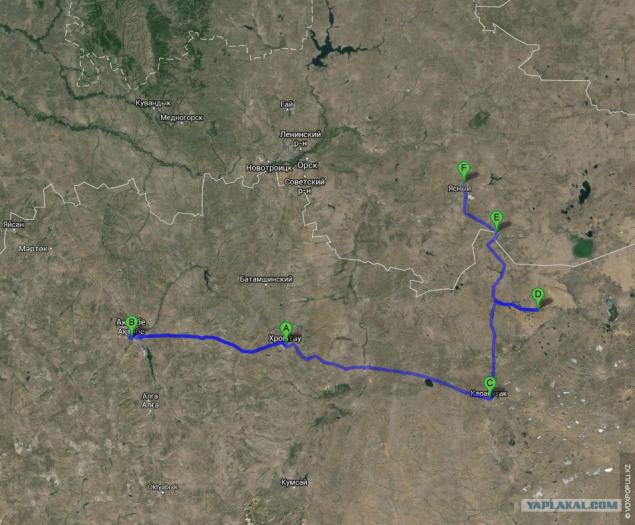
Launcher base "Clear" created 7 years ago on the basis Dombarovsky missile division, where mines are the heaviest Russian nuclear missiles RS-20 B "Voivod» (SS-18 Satan by NATO classification). For space launches in Clear build a high-tech assembly and testing facility. The two Dombarovsky converted silo launchers.
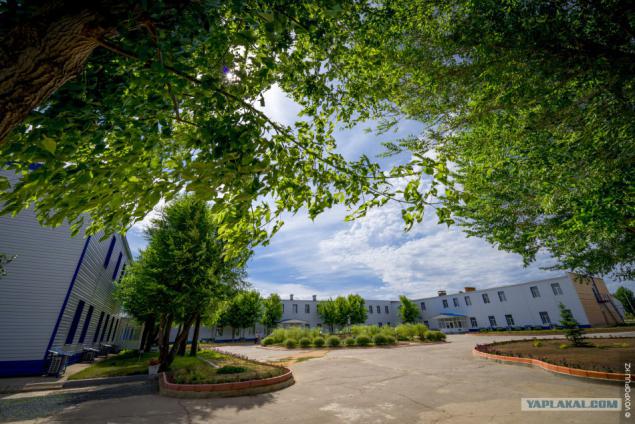
It is a small space center for the continuation of the "Dnepr" - conversion use RS-20 missiles, which are subject to de-alerting and recovery. The first launch of the rocket to deliver into orbit small, inexpensive satellites was in 1999, from the Baikonur Cosmodrome. The operator starts - a joint Russian-Ukrainian enterprise "Kosmotras" 10% of which is currently owned by Kazakhstan. The rocket in Soviet times was designed to "Yuzhnoye", and was built at the plant "Pivdenmash" in Dnepropetrovsk. By the way, many forgotten that the ex-president Leonid Kuchma Square, so ignominiously ended his presidency in 2004, was previously head of the highly successful "Yuzhmash" and in fact is still considered a basic figure in the creation of the Soviet nuclear shield.

In such plywood boxes are transported containers with satellites.
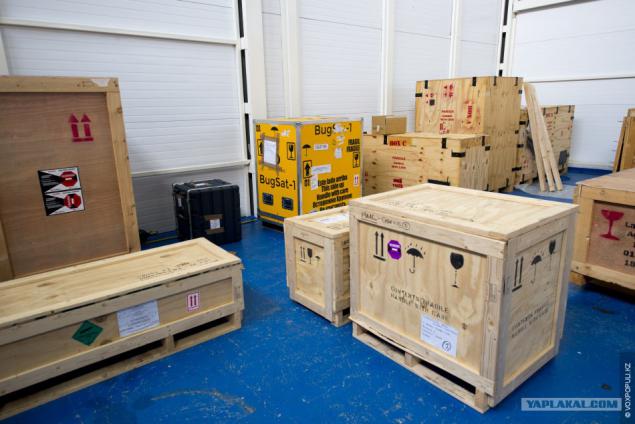
And that the containers.
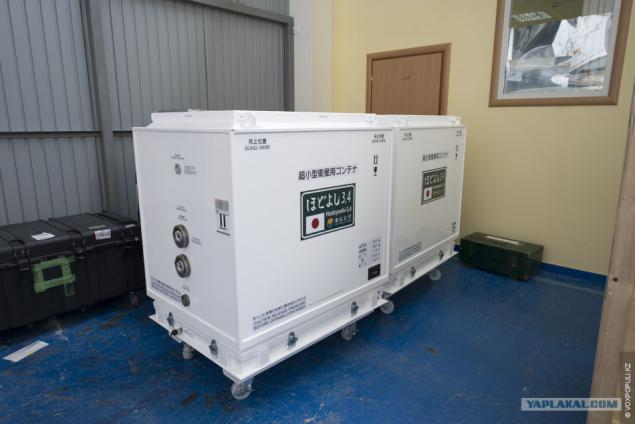
In just 7 years of existence, the starting base "Clear" launched seven rockets "Dnepr" for one year, which brought various Earth orbits 36 satellites, built for 24 states.
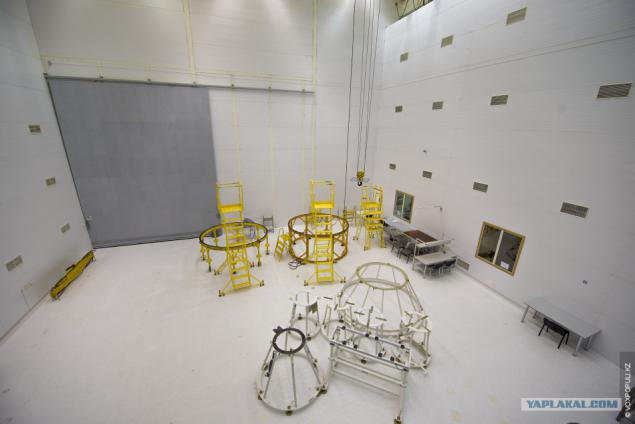
The old, still Soviet ties were so strong that even the latest political events did not seem able to break them. The question is, for how long?

Head base Nikolai Mikhailovich Fonin, former military, rocketeer, personally conducts tours of the facilities of the complex. He knows many kinds of tales about nuclear weapons and highly erudite in the history of rocketry.
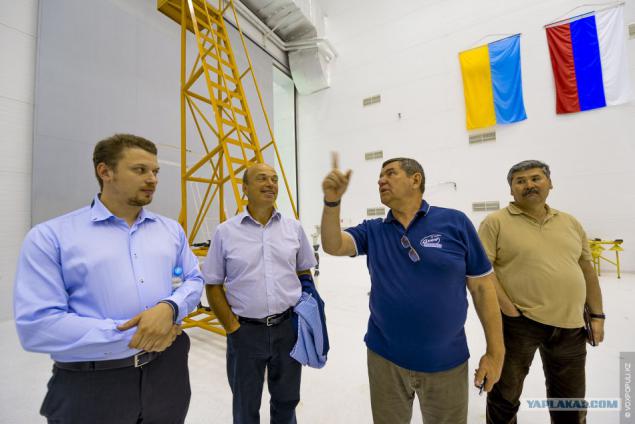
Here's what a column for refueling satellites heptyl. The missile itself is also used as fuel UDMH (unsymmetrical dimethylhydrazine) and nitrogen tetroxide as the oxidant.
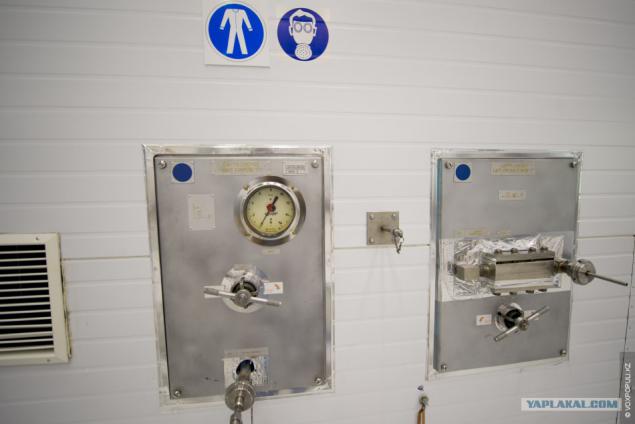
Since the fuel is very toxic, filling is done in a completely air-tight chemical protection suits with independent air supply.

The main processing unit assembly and test facility - a powerful closed ventilation system. On the one hand, it allows you to completely seal the room where we are working with dangerous chemical components, and on the other - to achieve surgical sterility in the pits. This is very important when it comes to working with orbiting satellites, because even the tiniest speck of dust that gets into the electrical circuit, can lead to a serious accident in orbit.

Now the satellite KazEOSat-2. This extravagant Englishman named Brian Kibler. He's the chief engineer of the British company Surrey Satellite Technology (SSTL) for the assembly, integration and testing of spacecraft.
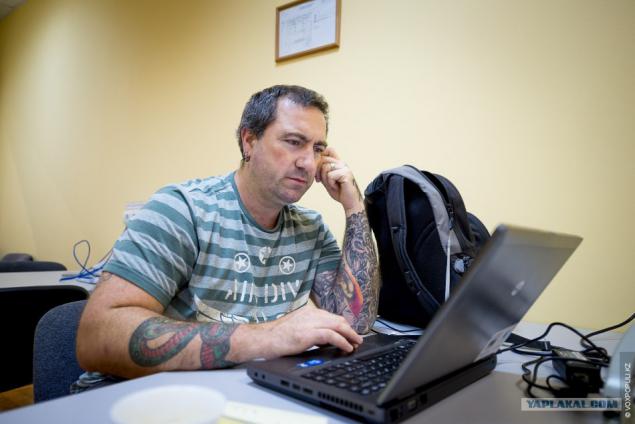
And this is a young professional company "Kazakhstan Garysh Sappary" Temirkhan Alibay. Together with Brian and his colleagues, he took part in the prelaunch satellite.
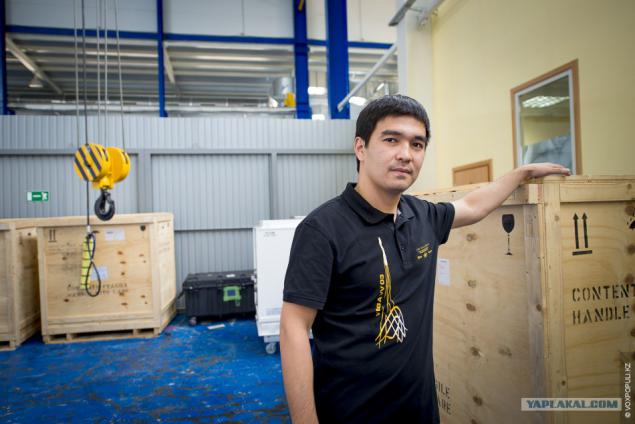
The launch of the RS-20 "Dnepr", produced on the night of June 20, will enter the Guinness Book of Records. For the first time in the history of space exploration one rocket was launched 33 spacecraft just 17 countries in the world, including those built for Kazakhstan KazEOSat-2 satellite.
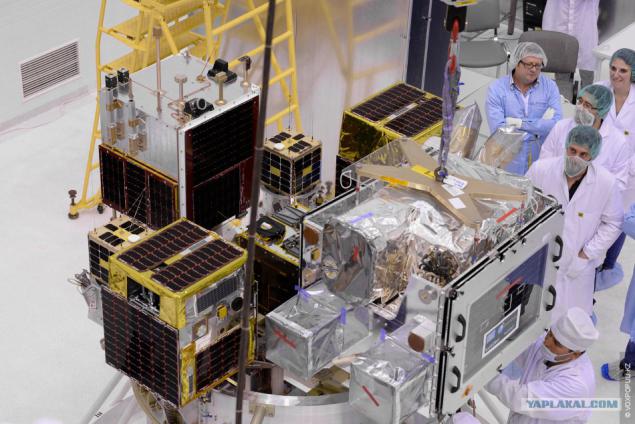
This sophisticated device is designed for satellite undock from the third stage of the rocket. We can say that it depends on the success of the launch campaign.
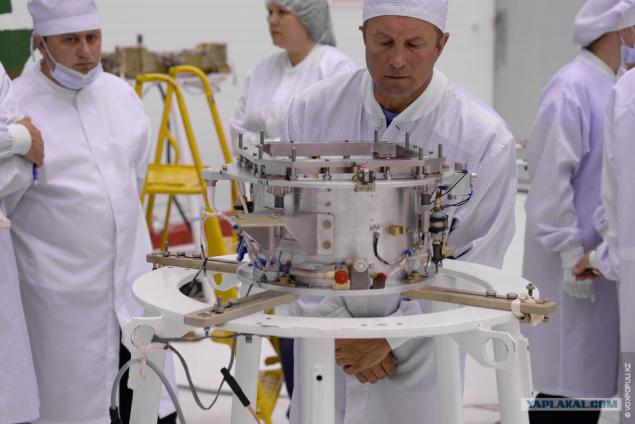
What's the whole trick? There are several factors. First of all, this is a very inexpensive cost start-RS-20 "Dnepr", of course, everything is relative, and here we are talking about the comparison with analogues of missiles, such as for example the European VEGA, launched from the Guiana Space Centre. Second - very precise removal. "Dnepr" allows you to view a satellite into orbit with an accuracy of 3 to 7 meters (it's still a carrier of nuclear weapons). What does this mean on the scale of the Earth and the cosmos, can not speak.
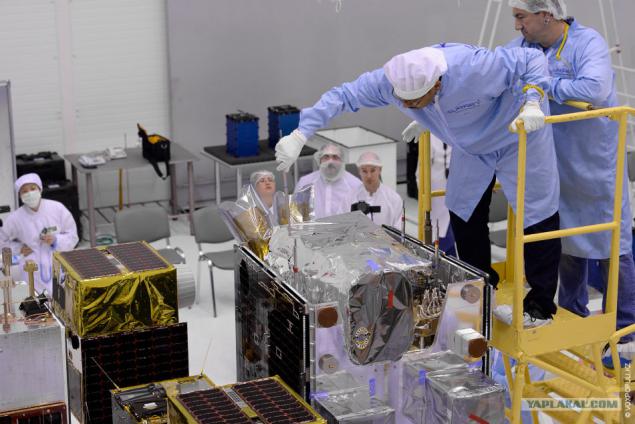
All the equipment for prelaunch testing of the satellite comes with it in the same container.

This missile is designed for launching satellites into sun-synchronous orbits, when the machine is like to be the sun in its movement around the Earth, and is always on the sunlit side of the planet. That is, in such orbits are usually the satellite remote sensing, intended for photographing the earth's surface.
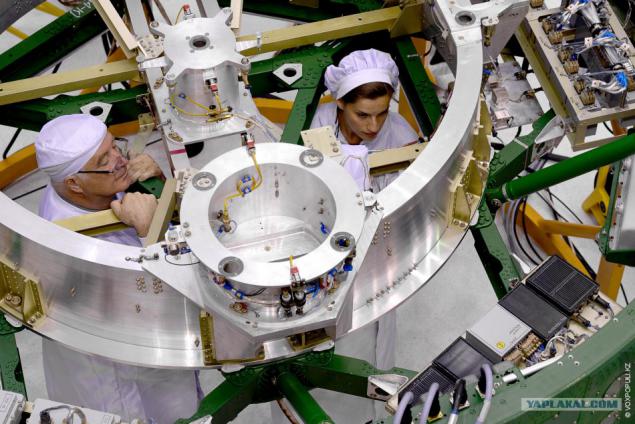
Today, with modern technology allows to achieve ultimate miniaturization of electronic devices, many public and private companies began to create small, cheap but very effective so-called nanosatellites. In general, as they say, simple, cheap and cheerful!
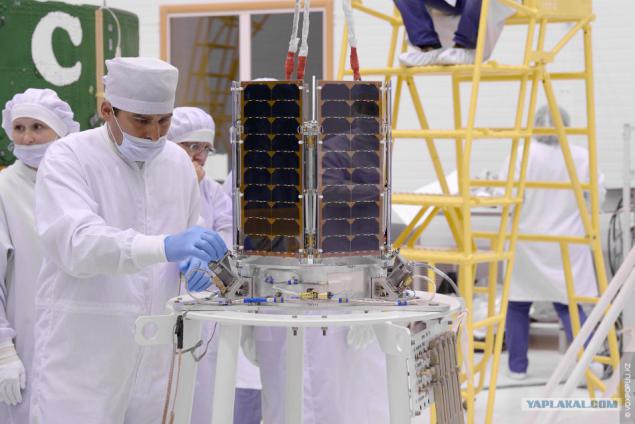
Incidentally, in a cluster of 33 Nanosatellites KazEOSat-2 it was not the greatest. The biggest - Spanish Deimos-2 remote sensing satellite.

In one cluster, launch satellites states such as Saudi Arabia, Japan, Russia, Italy, USA, Israel, Argentina, Ukraine, Germany, Brazil, Norway, Indonesia, Singapore and others. Full International!
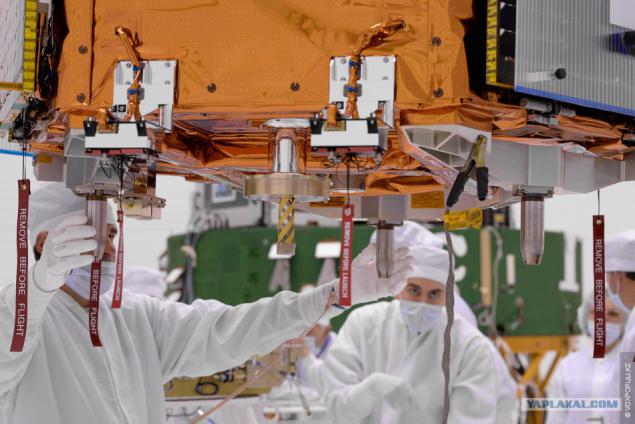
Basically remote sensing satellites launched since sun-synchronous orbit. The rest of the machines - the most diverse in terms of size and purpose. Some weight does not exceed one kilogram. These nanosatellites used for testing materials, the running of communications systems and basic research.
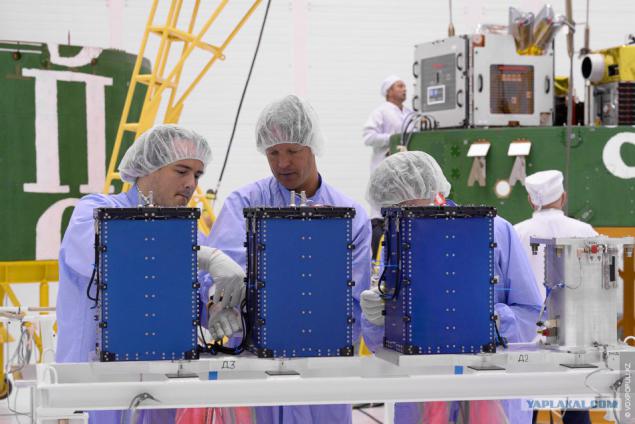
Check the operation of solar panels on KazEOSat-2.

...

The company is a subcontractor SSTL European concern Airbuse Defense & Space, with which our country has signed a long term contract on creation of Kazakhstan space infrastructure.
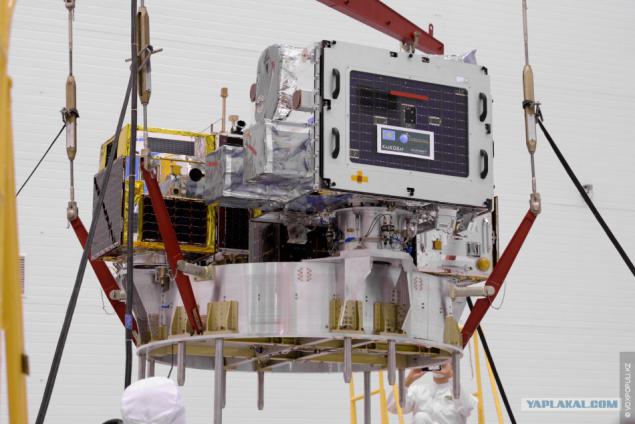
With KazEOSat-2 can obtain images of the Earth with a spatial resolution of 6, 5 meters. That is, the minimum detail in this image is around the truck.
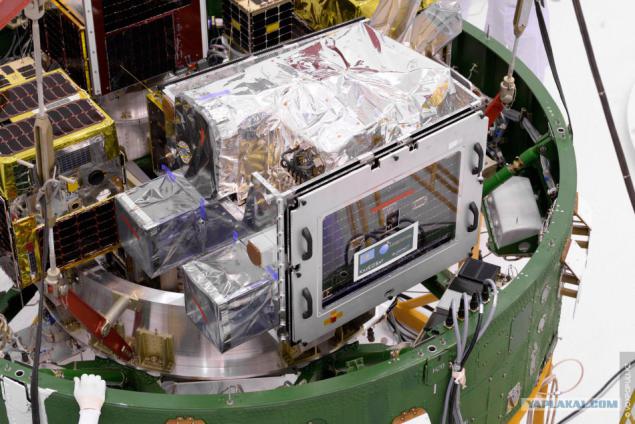
Weighing apparatus 177 kilograms, the height of its sun-synchronous orbit of 630 km, capacity - 1 million square kilometers per day.
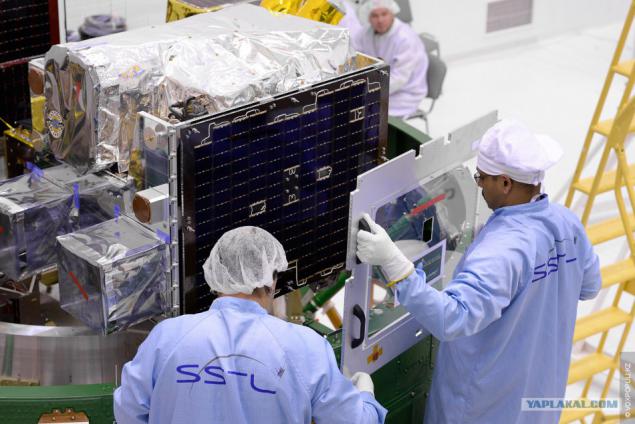
The satellite is built on a platform of SSTL-150, which has a very good year history. These devices have built for China, Canada and the UK.
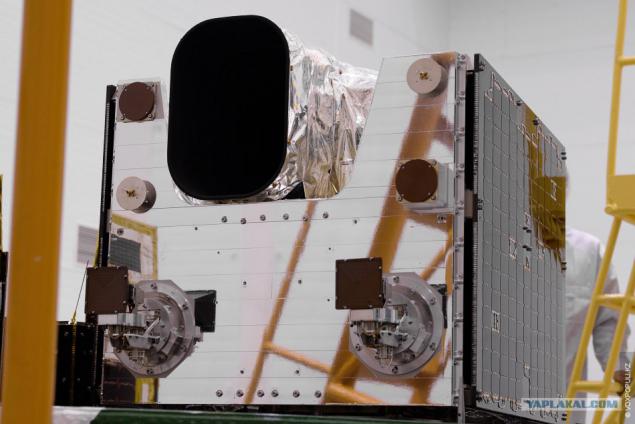
...
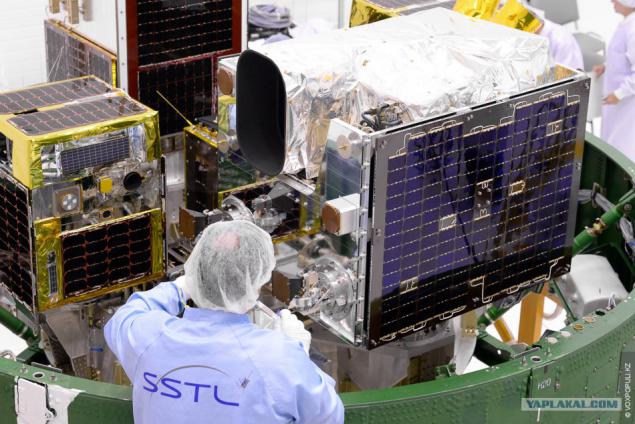
Temirkhan Alibay engineer launches SKTB "Garysh Sappary Kazakhstan»,
- The satellite remote sensing will also be the resolution, however, will be worse - 22 meters. But his appointment process. This is a completely new platform X-50. It even SSTL new platform, that is, he SSTL is also interested in the development of the new platform, and we can say lucky, that we will be part of the team that's designing the new platform.
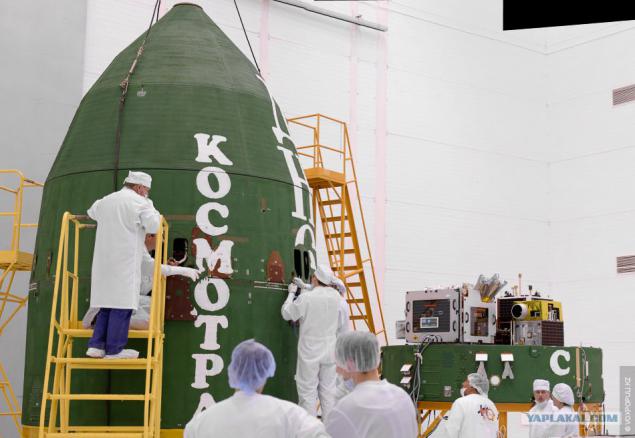
July 4 in Kazakhstan opens center ground, where it will be received and processed information from our satellites.
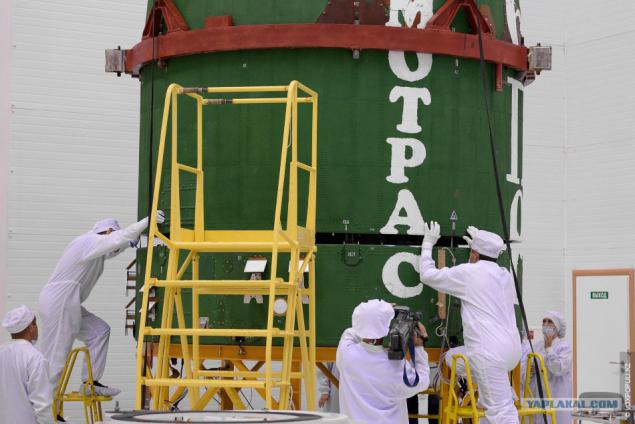
After experts development companies completed the testing of its spacecraft, the adapter closes the payload fairing. Further work Ukrainian experts come from the factory "Pivdenmash."
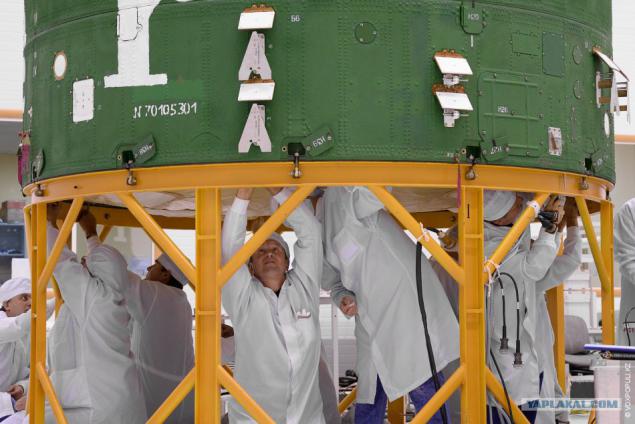
Their task - to prepare a head portion for docking with the rocket. Samu dock to carry out military after placing missiles in the mine. This is completely the coded operation, which nobody is permitted.
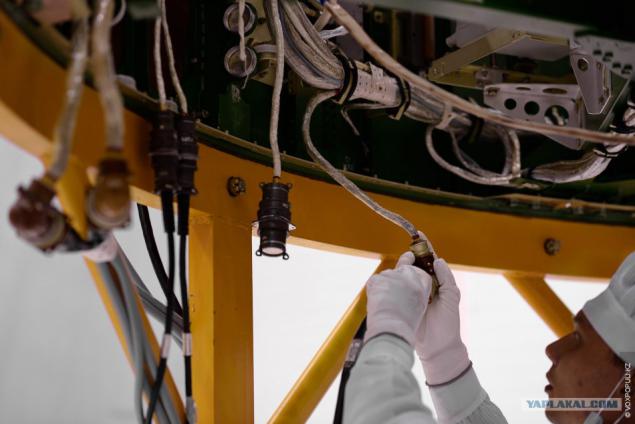
Driving product R-36M (SS-20 "Dnepr").

And here is the rocket - the main instrument of the Cold War, and NATO General nightmare.
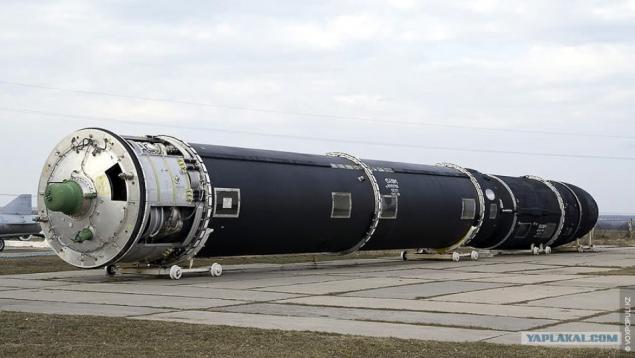
Silos with placement of the RS-20 rocket "Dnepr" 2 hours before the start.
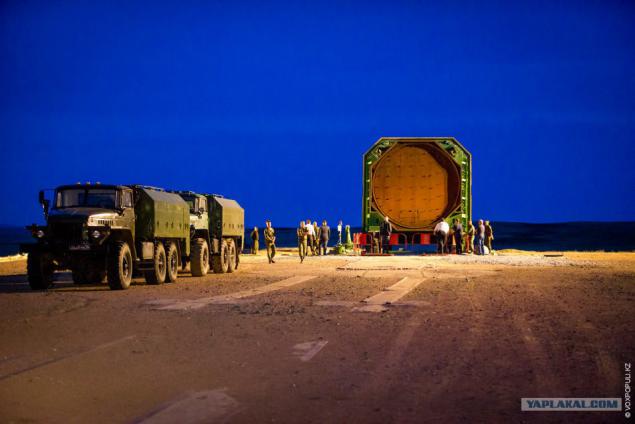
The missile itself is in the shaft as it suspended in a special container. This scheme is designed in case of a nuclear strike on the positioning area. The mine covers 200-ton armored plate. The principle of launching a mortar rocket, then there is a special powder pressure accumulator throws the product on a 20-meter height, then separated and carried out the launch of the main engines of the first stage.
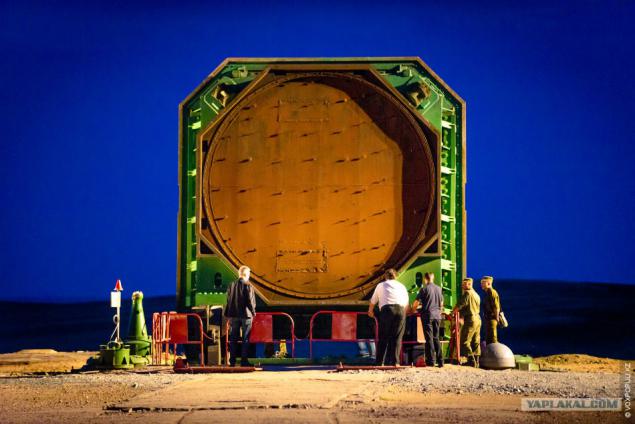
Frankly, positioning area Dombarovsky division is very little resemblance to the launch site. Between the objects are only dirt roads, and the objects themselves are not nearly covered. This is done in order to maximize the mask mine. More unfavorable conditions for shooting hard to imagine.

In one of the tents it is equipped with a field officer canteen in the other - room for monitoring the telemetry coming from the rocket.
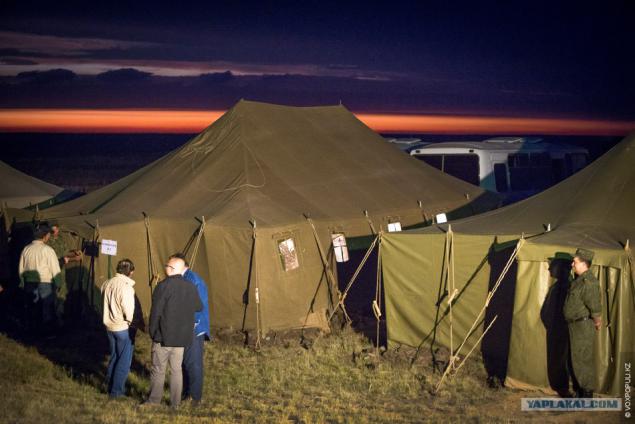
Officers arrived at the start with their wives and children. Start here - a great event.

Guests accommodated in tents.
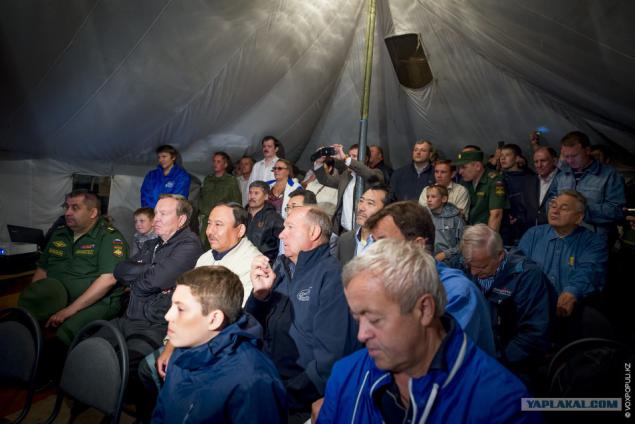
Prior to the start in minutes ...
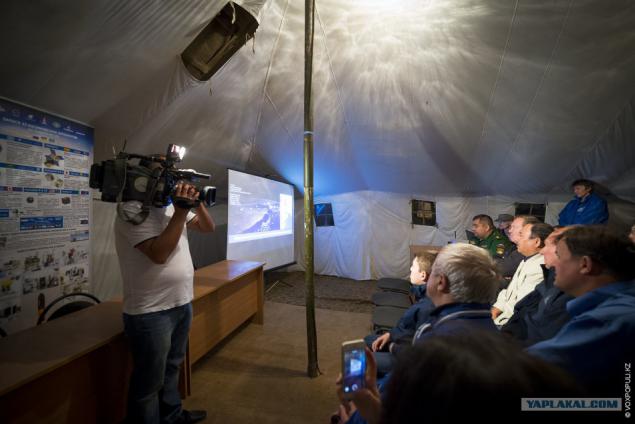
23:11:11 Moscow time (19:11:11 UTC). Start heroically shot me in total darkness at a distance of 7 kilometers to the limit of the matrix camera Nikon D 800 E.

Step 10 seconds of receipt of telemetry. Spacecraft separation from the carrier begins at 910th second after the start. KazEOSat-2 separated by 930 seconds of.
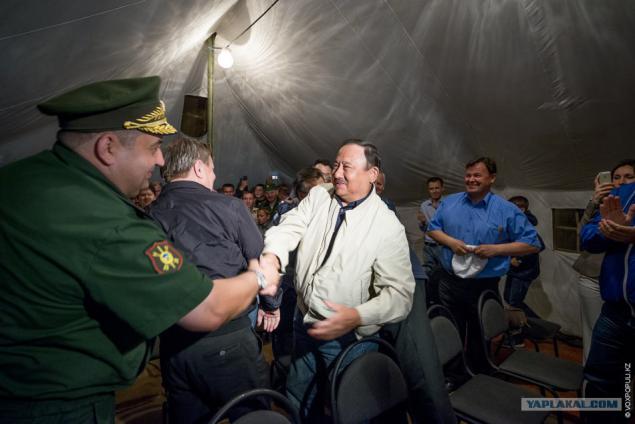
About an hour after the launch, we went to see the shaft launcher (MSE). From her smoke poured with a very unpleasant chemical odor. The military said that there heptyl left, it all came in a chemical reaction.
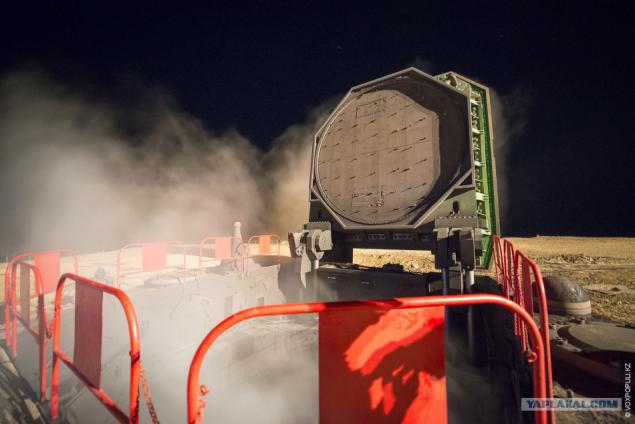
Lay around the seal ring through which the missile is held in the shaft in a suspended state.

Territory area, enclosed by three rows of barbed wire. Dark subject in the center of the frame - is a powder pressure accumulator (PAD), who threw a rocket from the mine.
Posted in [mergetime] 1404024524 [/ mergetime]
That's all! Thank you for attention.
Posted in [mergetime] 1404024585 [/ mergetime]
Video launch!
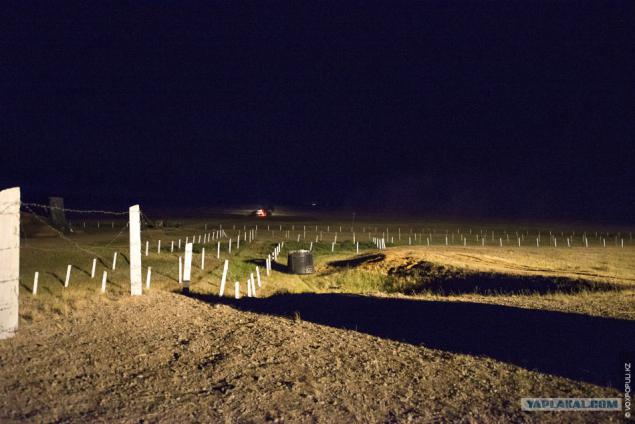
on the RS-20 rocket "Dnepr". Will be 48 photos via

Honestly, before I somehow did not realize that the largest in Asia cluster warheads is very close to the Kazakh border. For two decades, the work of our official propaganda this kind of strategic weapons, which today literally does not allow some countries to tear to pieces, was demonized so that for the majority of Kazakhstanis turned into some terrible bedtime story. But to our northern neighbors, residents of the Orenburg region, to have at his side a few dozen mines with nuclear missiles - the phenomenon is quite commonplace. Conventional military units with the boys, conscripts. Serve and protect them the same simple Russian peasants officers, which live in next door, sitting in a cafe, walking on the street with the children. In fact on the road from Aktobe to a clear here, thanks to the traditional hospitality of the local regional administration, has left the entire daylight hours. 400 kilometers from the checkpoint "Light", and then close to the missile base.

Launcher base "Clear" created 7 years ago on the basis Dombarovsky missile division, where mines are the heaviest Russian nuclear missiles RS-20 B "Voivod» (SS-18 Satan by NATO classification). For space launches in Clear build a high-tech assembly and testing facility. The two Dombarovsky converted silo launchers.

It is a small space center for the continuation of the "Dnepr" - conversion use RS-20 missiles, which are subject to de-alerting and recovery. The first launch of the rocket to deliver into orbit small, inexpensive satellites was in 1999, from the Baikonur Cosmodrome. The operator starts - a joint Russian-Ukrainian enterprise "Kosmotras" 10% of which is currently owned by Kazakhstan. The rocket in Soviet times was designed to "Yuzhnoye", and was built at the plant "Pivdenmash" in Dnepropetrovsk. By the way, many forgotten that the ex-president Leonid Kuchma Square, so ignominiously ended his presidency in 2004, was previously head of the highly successful "Yuzhmash" and in fact is still considered a basic figure in the creation of the Soviet nuclear shield.

In such plywood boxes are transported containers with satellites.

And that the containers.

In just 7 years of existence, the starting base "Clear" launched seven rockets "Dnepr" for one year, which brought various Earth orbits 36 satellites, built for 24 states.

The old, still Soviet ties were so strong that even the latest political events did not seem able to break them. The question is, for how long?

Head base Nikolai Mikhailovich Fonin, former military, rocketeer, personally conducts tours of the facilities of the complex. He knows many kinds of tales about nuclear weapons and highly erudite in the history of rocketry.

Here's what a column for refueling satellites heptyl. The missile itself is also used as fuel UDMH (unsymmetrical dimethylhydrazine) and nitrogen tetroxide as the oxidant.

Since the fuel is very toxic, filling is done in a completely air-tight chemical protection suits with independent air supply.

The main processing unit assembly and test facility - a powerful closed ventilation system. On the one hand, it allows you to completely seal the room where we are working with dangerous chemical components, and on the other - to achieve surgical sterility in the pits. This is very important when it comes to working with orbiting satellites, because even the tiniest speck of dust that gets into the electrical circuit, can lead to a serious accident in orbit.

Now the satellite KazEOSat-2. This extravagant Englishman named Brian Kibler. He's the chief engineer of the British company Surrey Satellite Technology (SSTL) for the assembly, integration and testing of spacecraft.

And this is a young professional company "Kazakhstan Garysh Sappary" Temirkhan Alibay. Together with Brian and his colleagues, he took part in the prelaunch satellite.

The launch of the RS-20 "Dnepr", produced on the night of June 20, will enter the Guinness Book of Records. For the first time in the history of space exploration one rocket was launched 33 spacecraft just 17 countries in the world, including those built for Kazakhstan KazEOSat-2 satellite.

This sophisticated device is designed for satellite undock from the third stage of the rocket. We can say that it depends on the success of the launch campaign.

What's the whole trick? There are several factors. First of all, this is a very inexpensive cost start-RS-20 "Dnepr", of course, everything is relative, and here we are talking about the comparison with analogues of missiles, such as for example the European VEGA, launched from the Guiana Space Centre. Second - very precise removal. "Dnepr" allows you to view a satellite into orbit with an accuracy of 3 to 7 meters (it's still a carrier of nuclear weapons). What does this mean on the scale of the Earth and the cosmos, can not speak.

All the equipment for prelaunch testing of the satellite comes with it in the same container.

This missile is designed for launching satellites into sun-synchronous orbits, when the machine is like to be the sun in its movement around the Earth, and is always on the sunlit side of the planet. That is, in such orbits are usually the satellite remote sensing, intended for photographing the earth's surface.

Today, with modern technology allows to achieve ultimate miniaturization of electronic devices, many public and private companies began to create small, cheap but very effective so-called nanosatellites. In general, as they say, simple, cheap and cheerful!

Incidentally, in a cluster of 33 Nanosatellites KazEOSat-2 it was not the greatest. The biggest - Spanish Deimos-2 remote sensing satellite.

In one cluster, launch satellites states such as Saudi Arabia, Japan, Russia, Italy, USA, Israel, Argentina, Ukraine, Germany, Brazil, Norway, Indonesia, Singapore and others. Full International!

Basically remote sensing satellites launched since sun-synchronous orbit. The rest of the machines - the most diverse in terms of size and purpose. Some weight does not exceed one kilogram. These nanosatellites used for testing materials, the running of communications systems and basic research.

Check the operation of solar panels on KazEOSat-2.

...

The company is a subcontractor SSTL European concern Airbuse Defense & Space, with which our country has signed a long term contract on creation of Kazakhstan space infrastructure.

With KazEOSat-2 can obtain images of the Earth with a spatial resolution of 6, 5 meters. That is, the minimum detail in this image is around the truck.

Weighing apparatus 177 kilograms, the height of its sun-synchronous orbit of 630 km, capacity - 1 million square kilometers per day.

The satellite is built on a platform of SSTL-150, which has a very good year history. These devices have built for China, Canada and the UK.

...

Temirkhan Alibay engineer launches SKTB "Garysh Sappary Kazakhstan»,
- The satellite remote sensing will also be the resolution, however, will be worse - 22 meters. But his appointment process. This is a completely new platform X-50. It even SSTL new platform, that is, he SSTL is also interested in the development of the new platform, and we can say lucky, that we will be part of the team that's designing the new platform.

July 4 in Kazakhstan opens center ground, where it will be received and processed information from our satellites.

After experts development companies completed the testing of its spacecraft, the adapter closes the payload fairing. Further work Ukrainian experts come from the factory "Pivdenmash."

Their task - to prepare a head portion for docking with the rocket. Samu dock to carry out military after placing missiles in the mine. This is completely the coded operation, which nobody is permitted.

Driving product R-36M (SS-20 "Dnepr").

And here is the rocket - the main instrument of the Cold War, and NATO General nightmare.

Silos with placement of the RS-20 rocket "Dnepr" 2 hours before the start.

The missile itself is in the shaft as it suspended in a special container. This scheme is designed in case of a nuclear strike on the positioning area. The mine covers 200-ton armored plate. The principle of launching a mortar rocket, then there is a special powder pressure accumulator throws the product on a 20-meter height, then separated and carried out the launch of the main engines of the first stage.

Frankly, positioning area Dombarovsky division is very little resemblance to the launch site. Between the objects are only dirt roads, and the objects themselves are not nearly covered. This is done in order to maximize the mask mine. More unfavorable conditions for shooting hard to imagine.

In one of the tents it is equipped with a field officer canteen in the other - room for monitoring the telemetry coming from the rocket.

Officers arrived at the start with their wives and children. Start here - a great event.

Guests accommodated in tents.

Prior to the start in minutes ...

23:11:11 Moscow time (19:11:11 UTC). Start heroically shot me in total darkness at a distance of 7 kilometers to the limit of the matrix camera Nikon D 800 E.

Step 10 seconds of receipt of telemetry. Spacecraft separation from the carrier begins at 910th second after the start. KazEOSat-2 separated by 930 seconds of.

About an hour after the launch, we went to see the shaft launcher (MSE). From her smoke poured with a very unpleasant chemical odor. The military said that there heptyl left, it all came in a chemical reaction.

Lay around the seal ring through which the missile is held in the shaft in a suspended state.

Territory area, enclosed by three rows of barbed wire. Dark subject in the center of the frame - is a powder pressure accumulator (PAD), who threw a rocket from the mine.
Posted in [mergetime] 1404024524 [/ mergetime]
That's all! Thank you for attention.
Posted in [mergetime] 1404024585 [/ mergetime]
Video launch!

Tags
See also
"Topol M" missile system
How do I download an intercontinental ballistic missile "Topol-M"
Russian strategic nuclear forces and missile defenses on the pictures Google Earth
A new generation of nuclear-powered cruiser "Severodvinsk" (13 photos)
The most formidable domestic weapons
18 absurd bloopers, which missed filmmakers
The State Duma refused to cancel the transport tax.
Russia tested a new ballistic missile
Historical missile test yars Plesetsk
How to launch satellites "Baikonur"?

















